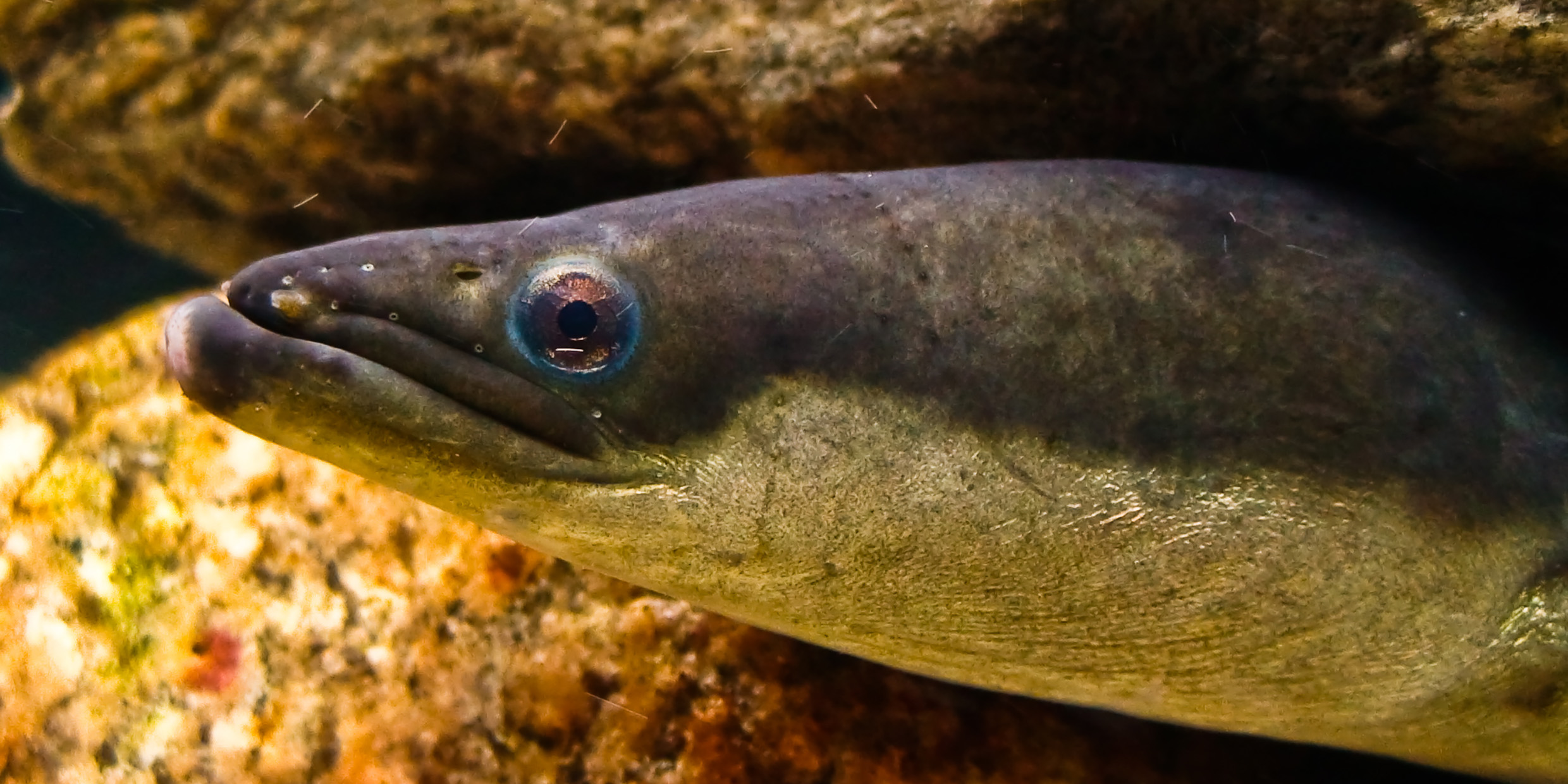Originally published 14 December 1992
This is the story of the white eel of Walden.
It is a story that seems appropriate for this season of miracles.
A large white eel has been observed in Walden Pond during each of the past three summers, lurking beneath a snag at the bottom of the pond. John Mitchell, editor of Sanctuary, the magazine of the Massachusetts Audubon Society, tells of the eel in [a 1992] issue of that magazine.
And what, you ask, is miraculous about an eel in a New England pond?
Well, for starters, Walden Pond has no connection with the sea; it is an outpouring of the local water table. And eels spawn in the ocean.
So how did the eel make it’s way to Thoreau’s pond?
Mitchell gives the probable answer: Like others of its species, the white eel of Walden began life in the Sargasso Sea, a seaweedy region of the Atlantic Ocean near Bermuda. The newly-hatched larval eel was tiny and willow-leaf-shaped, not at all resembling an adult eel. A year after hatching, the larva had made its way to the New England coast, where it metamorphosed into a small, transparent eel, called a glass-eel or elver. On a warm, rainy night in spring, it entered the mouth of Merrimack River and made its way upstream via the Concord and Sudbury Rivers to Andromeda Pond, which is connected by wetlands to Fairhaven Bay on the Sudbury.
So far, nothing extraordinary. A zillion other elvers do the same thing every spring, eventually reaching the headwaters of every river and stream in New England. But this particular elver was not finished. Andromeda Pond is separated from Walden by the high, dry embankment of the Boston and Maine Railroad. On a rainy night, somehow sensing another body of water not far away, the elver climbed the embankment and scooted down the other side into the landlocked waters of Walden.
There it grew into the adult eel that now lurks among the bottom snags.
On a wet autumn night some 10 or 20 years after its arrival, the white eel of Walden will reverse its journey, slithering over the railroad embankment, through the marshes, down the Sudbury, Concord, and Merrimack Rivers to the Atlantic, where it will be transformed into an adult seagoing eel of resplendent silver color and ripening gonads. It will cross a thousand miles of open ocean, by a different route than its landward swim, to mate and spawn where it began its life in the Sargasso Sea.
In all of this, Mitchell sees “a story of metaphorical proportions,” stitching together remote seas and landlocked ponds in a great karmic cycle of life and death.
It’s that, all right — and more.
How does the eel carry a map of its journey from sea to pond and back again? How does it navigate? What triggers the stages of its journey? How do the map, the navigational skills, and the triggers remain intact through transmutations from larva to elver, to freshwater eel, to seagoing sexually mature adult?
There is no greater mystery in nature than animal migration.
Consider, for example, the monarch butterfly. Each fall, North American monarchs undertake a migration that can be as long as 2,500 miles, from the meadows of New England, for instance, to a few highly restricted sites in the mountains of Mexico where they spend the winter in a state of semitorpor, totally covering the trees upon which they roost. Year after year they return to the same groves, even to the same trees. As spring warms the mountain groves, the monarchs mate, then return north to lay their eggs and die. Their destination on the return migration is not nearly so specific as on the southward journey.
Here’s the kicker: The monarchs that fly south are first generation insects. They have never made the journey before, yet they converge on the same clusters of trees generation after generation.
OK, grant that a map to the Mexican groves and the skills to follow it are somehow programmed in the monarch’s genes, and carried in the monarch’s brain. But think about the size of that brain. A pinhead. A tangles of nerve cells no bigger than the period at the end of this sentence enables the insect to fly thousands of miles — traveling by day, resting at night — and arrive precisely at a destination it has never visited before.
No one knows how animals accomplish such feats. Different species apparently use different navigational aids: the stars, the Earth’s magnetic field, light, gravity, visual landmarks, winds, and currents. The animals may be responding to genetic urges that evolved over hundreds of millions of years as continents drifted and climates changed.
The white eel of Walden is a metaphor, all right — of epic proportions. Its migrations — like the monarch butterfly’s, the salmon’s, or the arctic tern’s — integrate vast spaces and eons of time, and bind together the forces of nature in a seamless web. We have only begun to understand how tightly and expertly the web is woven.
I don’t know about you, but to me the most miraculous thing about the white eel of Walden is that there is no miracle. It is life itself that is so astonishingly wonderful — but not beyond our knowing.



